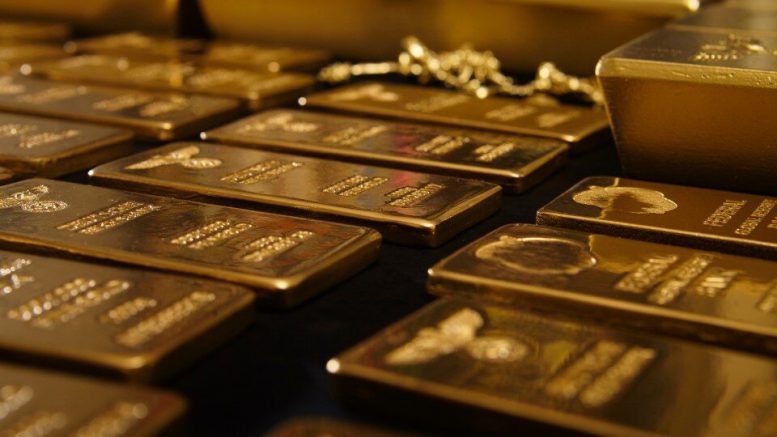Central bank buying and investors diversifying away from record stock markets are driving the price of gold to new highs, analysts say.
The spot price of gold fell US$26.66 an oz. on Wednesday, from a record of US$2,354.89 per oz. the day before, as stocks retreated on higher-than-expected United States inflation in March of 3.5%. Bullion had increased 17% to the new high since reaching US$1,992.25 on Feb. 13.
Gold has been setting record prices since February even as markets such as the Dow Jones Industrial Average closed at a record 39,131.53 on Feb. 23 and the S&P 500 ended March 28 at an all-time high of 5,254.35.
There is no historical correlation between high gold prices and elevated stocks markets. Usually, investors buy gold as a safe haven as stocks plunge.
But now, investors are diversifying into commodities like gold to protect the stock gains they’ve made over the past few years, Jeffrey Christian, a gold expert with New York-based CPM Group, said by email.
“The sharp increase in equity indices has contributed to the investor interest in gold and commodities,” Christian said. “Investors seek to take profits on some of their equity and bond market positions, capitalize those gains, and diversify their exposure to include commodities.”
Copper, too
Copper has also climbed. It’s risen nearly 15% from US$3.67 per lb. Feb. 9 to US$4.22 on Wednesday. Investors are buying into the rising prices using futures, options and exchange-traded funds (ETFs) which are shorter term and offer easy entries and exits to commodities, Christian said.
“The economic environment is strong in some industrialized nations, e.g. the U.S.,” he said. “Even so, many financial market participants have pivoted away from expecting an imminent recession to thinking one may be avoiding entirely. They probably are still wrong, just on the other extreme.”
Central bank buying of gold increased two years ago with the Russian invasion of Ukraine and the freezing of Russia’s foreign exchange. It hasn’t let up, and has dwarfed the sales of gold by ETFs and the Commodity Futures Trading Commission, Paul Wong, a precious metals analyst with Toronto-based Sprott, said in a report on April 2.
Central banks added a net 2,630 tonnes while the futures commission and ETFs sold a net 854 tonnes in last year’s second half. As of December, the difference had widened to more than 2,980 tonnes or 95.8 million oz., Wong said.
‘Outside money’
“There is also a growing preference for ‘outside money’ (assets not linked to any specific country) in central bank reserves, a reaction to the trend of U.S. dollar weaponization and moves toward de-dollarization,” Wong said.
The central bank gold buying is “a strategy to hedge against inflation and the impact of relaxed monetary policy on global currencies and sovereign bonds, and a means of insuring against the escalating geopolitical tensions associated with deglobalization,” he said.
Investors should also note the difference in price for an ounce of gold between the Shanghai Gold Exchange and the global price that’s usually set by the London Bullion Market Association or The Commodity Exchange in New York, Wong said. The higher price in Shanghai shows Chinese demand.
“There is clear evidence — although difficult to fully quantify — that the general population is buying gold as a hedge to protect against their high wealth exposure to the fragile property market,” he said. “Assuming global tensions persist and the trend toward deglobalization continues, central banks and sovereigns may likely maintain a supportive influence on gold prices.”


Be the first to comment on "Central banks, de-risking investors power gold price"